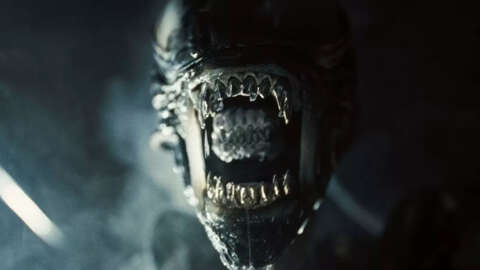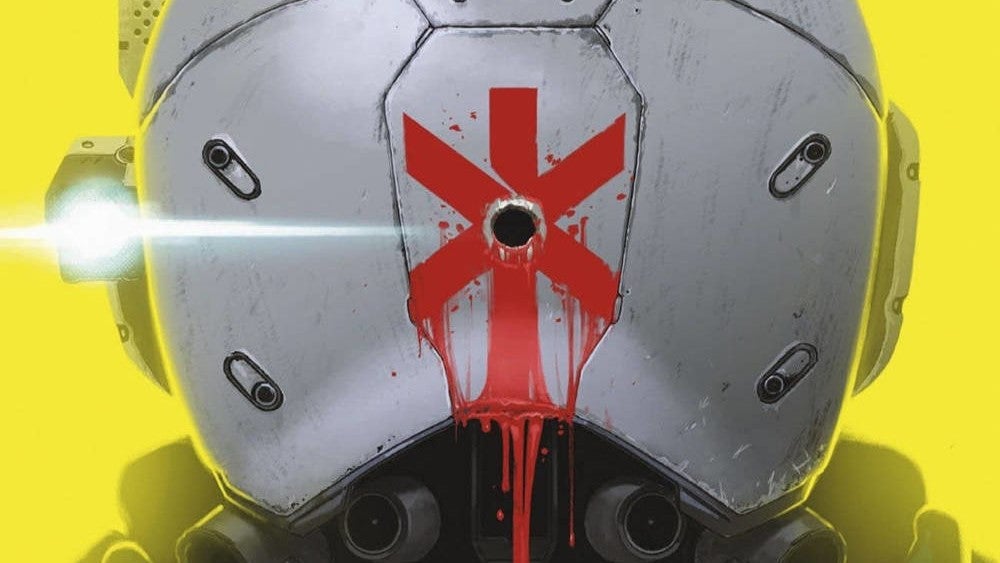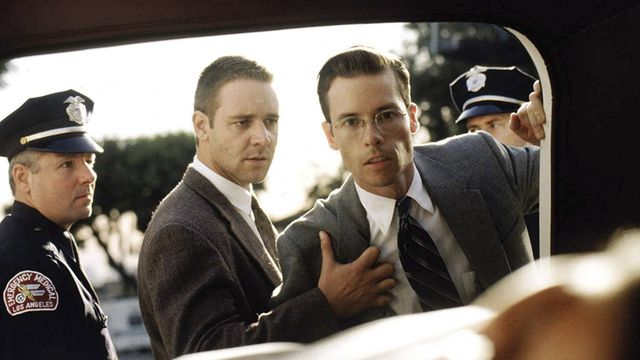Doom: The Dark Ages promises a bold new take on the long-running shooter’s legacy. Revealed in a short but loud trailer as part of the Xbox Games Showcase, it features dragon riding, mech battles, and a much darker, more ‘metal’ visual palette. But those grimdark ideas aren't the only new elements, nor are they the most significant. For in the Doom Slayer’s left hand is a shield to protect him from demons. And in his right hand is a flail, the bludgeoning chain weapon of the middle ages. Yes, Doom’s going melee.
It must have been a challenge for developer Id Software to know where to go next after it had seemingly perfected the Doom formula with the deeply smart and relentlessly energetic Doom Eternal. The answer, of course, is to do what Doom has always done: reinvent itself. And so while the medieval-like setting and melee combat of Doom: The Dark Ages was something few of us expected, it wasn’t truly a surprise. Of course Doom was going to take a wild leap for whatever came next.
“It’s a medieval war against Hell,” said Hugo Martin, Studio Creative Director at Id Software, at IGN Live. “You say the word medieval and you gotta have melee weapons.” And so replacing the Doom Slayer’s chainsaw is a flail and shield, both of which appear to be integral to the reforged combat loop. The shield, a Captain America-like buckler, has revving chainsaw teeth around the circumference and can be hurled through enemy hordes. The flail, meanwhile, can strike foes from their demonic mounts. Joining them is the Doom Slayer’s own body, since his kick is as good a weapon as any mace. While guns are clearly still the key part of the toolset, it seems like close-quarters combat has been upgraded from ‘supplementary’ to ‘core’. That’s a strong new approach for the series that lives and breathes firearms.
Of course, this isn’t the first time that Id Software has taken a bold step. In fact, Doom’s entire history is a series of energetic creative leaps. The 1993 original may have been built on the core tenets of Wolfenstein 3D, but Doom’s big push was the inclusion of networked multiplayer – the very mode that coined “deathmatch” as an immortal video game term. The following year’s Doom 2 was admittedly more conservative, but it brought with it the Super Shotgun; the powerful double-barrelled buckshot launcher that proved just a single weapon could reposition a whole game. The Super Shotgun is now arguably the most iconic gun to have ever existed in a video game, despite only being able to fire two shells per reload in a game that never lets up on enemies.
It was 2004’s Doom 3, though, that really proved Id Software’s guts. The vibrant reds and oranges of its formative games were exchanged for gloom and shadows as the series experimented with survival horror. While much too action packed to live comfortably alongside Silent Hill, Doom 3 was eerie and occultish in a way its predecessors weren’t. Its most fascinating mechanical innovation was a flashlight that could only be used when your weapon was holstered, forcing you to choose between seeing what horrors lurked in the pitch black and being able to blow their heads off. The system lent Doom 3 a distinct tone and unique pace, forcing you to be slower, more methodical, and more scared. It was a controversial mechanic, one that would be quickly removed by modders and officially eliminated by a 2012 re-release. But it was also emblematic of what Id believed Doom could be.
For Doom’s next regeneration, which started development in the late 2000s, the studio understandably looked to Call of Duty. The FPS behemoth’s cinematic campaigns proved alluring templates, but as production progressed the Doom 4 team recognised that none of those ideas worked for either their series or themselves. It was bold, true, but not the right flavour of bold. And so a back-to-the-drawing-board approach eventually resulted in 2016’s critically acclaimed Doom. Its name said it all: this was the definitive version of what Id Software made all those years ago. But that certainly didn’t mean it was conservative or nostalgic; this was a shooter with a huge emphasis on rhythm and speed, combining gameplay with music in a way that the developers of the ‘90s could never even dream of. The result was practically a heavy metal album with frenetic, fluid fights. Before Titanfall 2 arrived, Doom made it clear that movement was the fabric of the new generation of shooters.
If Doom’s headline feature was its speed, then its quietly revolutionary trait was how it dealt with health. The scrapped Doom 4 prototype had pilfered Call of Duty’s regenerating hit points, a system that demanded you take cover to patch yourself up. Doom 2016 rejected that idea entirely; if you wanted to heal then you had to kill in exchange. That philosophy spawned the Glory Kill executions, which tore apart enemies like pinatas to reveal the health kits inside. And in Id Software’s most recently released experiment, 2020’s Doom Eternal, this simple idea became the core.
“Ballistic resource manager” perhaps isn’t the sexiest thing to call your hyperkinetic FPS, but that’s exactly what Doom Eternal not so secretly is. Forget the financial economy, this is the bullet economy: you kill to harvest what you need to kill even more. This results in a chain of rapid slaughter where every kill is a decision – you must not only select the right weapon for the enemy you face, but also eviscerate that enemy in the manner that will produce the items required. Need armour? Then set thy foe aflame. Need bullets? Chew them up with a chainsaw. Need health? Rip and tear with your fists.
Through this approach, Id Software rethought the entire fundamentals of not just Doom, but the arcade shooter as a whole. For a series and genre that had historically been considered ‘mindless’, Eternal dials up the smarts. It rejects your wish to just kick back and blast away, forcing you to the edge of your seat with its demands of speed, precision, and forward thinking. It’s a design encapsulated by Eternal’s most polarising enemy: the Marauder, a beast that’s surely the progenitor for what comes next in Doom: The Dark Ages.
The single aspect that most surprised me in the new trailer was seeing the Doom Slayer parry a Hell Knight. I was instantly reminded how battles with the Marauder demanded much more precision and timing than a regular Doom shootout, with split-second dodges and perfect reactions to its telegraphing eye flash required to defeat it. This unusual switch in tempo meant many disliked how the Marauder interrupted their flow, but I relished its challenge. Doom: The Dark Ages’ use of a parry suggests that it has found a way to reinvent the fundamentals of the Marauder, using those split-second reactions to turn the tables on enemies.
What we don’t see in the trailer are any Glory Kills. And the combat itself seems much more forward-momentum heavy, rather than the enemies-from-all-sides battle arenas from the previous two games. And so it appears that The Dark Ages could be an even more significant departure from what was laid down in Doom and Doom Eternal than just the melee factor. We’ll have to wait to see exactly what all the components of this new, more grimdark iteration of the series are, but whatever they turn out to be, I’m pleased it’s more of the same; more of Doom’s insatiable appetite to reinvent itself every time.
Matt Purslow is IGN's Senior Features Editor.









